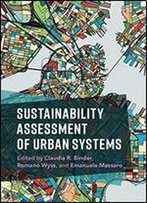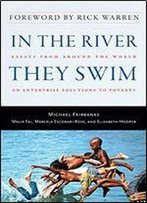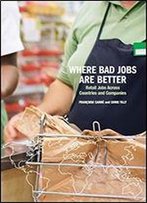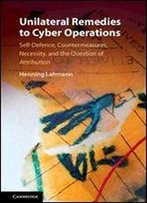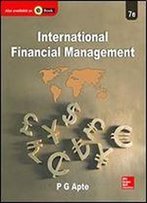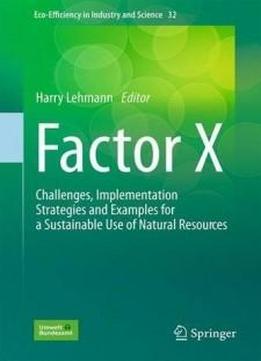
Factor X: Challenges, Implementation Strategies And Examples For A Sustainable Use Of Natural Resources (eco-efficiency In Industry And Science)
by Harry Lehmann /
2017 / English / PDF, EPUB
13.5 MB Download
This book describes and analyses necessities for a more
resource-efficient world. It discusses solutions for a more
sustainable use of natural resources, addressing decision-makers
and experts from the fields of policy development, industry,
academia, civil society, and the media. The book presents
strategies, concrete ways and examples of achieving more
sustainable resource use in practice.
This book describes and analyses necessities for a more
resource-efficient world. It discusses solutions for a more
sustainable use of natural resources, addressing decision-makers
and experts from the fields of policy development, industry,
academia, civil society, and the media. The book presents
strategies, concrete ways and examples of achieving more
sustainable resource use in practice.
Following on from two previous titles published on Factor X by
the Umweltbundesamt (German Environment Agency), entitled “Factor
X: Policy, Strategies and Instruments for a Sustainable Resource
Use” (2013) and “Factor X: Re-source – Designing the Recycling
Society” (2014), this book further investigates how savings in
natural resources and resource efficiency improvements could be
achieved, focusing on good practice examples that cover different
resource categories, pursue different efficiency strategies and
come from different sectors, e.g. innovative products or
services, technology, man
Following on from two previous titles published on Factor X by
the Umweltbundesamt (German Environment Agency), entitled “Factor
X: Policy, Strategies and Instruments for a Sustainable Resource
Use” (2013) and “Factor X: Re-source – Designing the Recycling
Society” (2014), this book further investigates how savings in
natural resources and resource efficiency improvements could be
achieved, focusing on good practice examples that cover different
resource categories, pursue different efficiency strategies and
come from different sectors, e.g. innovative products or
services, technology, management approaches, systemic approaches, etc.
agement approaches, systemic approaches, etc.
The background against which this work is done has a highly
comprehensive span, from the first Declaration of the Factor X
Club in the nineties, to the European Commission’s Roadmap to a
Resource Efficient Europe that was published in September 2011,
through to the German Federal government’s German Resource
Efficiency Programme (ProgRess I and II) in 2012 and 2016, the G7
Alliance for Resource Efficiency, and most recently the
development and implementation of the Sustainable Development
Goals (SDG).
The background against which this work is done has a highly
comprehensive span, from the first Declaration of the Factor X
Club in the nineties, to the European Commission’s Roadmap to a
Resource Efficient Europe that was published in September 2011,
through to the German Federal government’s German Resource
Efficiency Programme (ProgRess I and II) in 2012 and 2016, the G7
Alliance for Resource Efficiency, and most recently the
development and implementation of the Sustainable Development
Goals (SDG).


